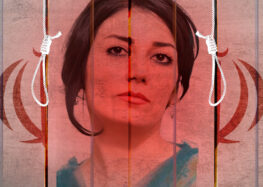While the world witnesses Iranian women protesting in the streets, much of their resistance happens behind closed doors, away from cameras and public demonstrations. Inside homes, workplaces, universities, and digital spaces, Iranian women are challenging oppression, fighting against the Islamic Revolutionary Guard Corps (IRGC) and the regime’s patriarchal control in subtle but powerful ways.
This hidden battle is one of defiance, resilience, and survival. It is waged through everyday acts of resistance, from refusing compulsory hijab laws to educating young girls about their rights, creating a silent but transformative revolution that threatens the foundation of Iran’s authoritarian rule.
This analysis explores:
• How Iranian women resist in private spaces.
• The IRGC’s methods of controlling women’s lives.
• The impact of digital activism in challenging oppression.
• The role of family, education, and culture in shaping a new generation of resistance.
• How global solidarity can strengthen these efforts.
1. Everyday Acts of Defiance: Resistance Beyond the Streets
A. Rejecting Compulsory Hijab at Home and in Public Spaces
One of the most visible acts of defiance by Iranian women is their rejection of the mandatory hijab:
• Many women remove their hijabs once inside safe spaces, such as homes, private gatherings, and underground social events.
• In public places, some women wear the hijab loosely or opt for alternative styles that subtly challenge state-mandated dress codes.
• Mothers and sisters encourage younger generations to see the hijab as a choice, not an obligation, undermining state narratives.
Despite IRGC patrols, this act of resistance continues every day, proving that the state cannot control personal beliefs.
B. Underground Education: Teaching Women’s Rights in Secret
Since the Islamic Republic’s rise to power, Iranian women have faced severe restrictions on education and employment. However, informal networks have emerged to educate and empower women:
• Secret study groups discuss feminism, human rights, and political resistance, offering an alternative to the state-controlled curriculum.
• Women lawyers and activists teach legal rights, helping others navigate divorce laws, custody battles, and workplace discrimination.
• Underground book clubs and film screenings showcase banned literature and documentaries about women’s struggles worldwide.
These efforts ensure that women continue to gain knowledge and power, despite the IRGC’s censorship and intimidation tactics.
C. Resistance in Marriage and Family Life
Iranian women also challenge gender oppression within their own households:
• Refusing forced marriages or negotiating equal partnerships within relationships.
• Encouraging daughters and sisters to seek education, careers, and independence.
• Pushing back against patriarchal traditions, advocating for equal inheritance rights and legal autonomy.
By transforming family structures, women are reshaping Iranian society from within, laying the foundation for long-term change.
2. The IRGC’s Control Over Women’s Private Lives
The IRGC enforces oppression not just in public but also in private spaces, using surveillance, intimidation, and punishment:
A. Digital Surveillance and Online Crackdowns
The IRGC’s Cyber Unit monitors:
• Social media posts that defy state narratives.
• Women who share hijab-free pictures or express feminist views.
• Digital activists who organize underground movements or expose human rights abuses.
Women caught violating these digital restrictions face harsh punishments, including:
• Arrests and interrogations for online activism.
• Forced confessions broadcasted on state-controlled media.
• Banning from universities or workplaces as punishment for political dissent.
Despite this, Iranian women continue to fight online, proving that digital spaces remain a battleground for resistance.
B. Harassment and Arrests in the Name of Morality
• The IRGC’s morality police conduct random home raids, monitoring gatherings where women are unveiled or discussing forbidden topics.
• Women are arrested for attending private parties, singing and dancing, or simply being in mixed-gender social settings.
• The state pressures families to monitor and report their daughters, creating an atmosphere of fear and mistrust.
Yet, women continue to push back, refusing to let the state dictate their personal freedoms.
3. The Role of Digital Activism in Resistance
A. Online Campaigns and Social Media as a Tool for Change
Despite internet restrictions, Iranian women use social media to:
• Share stories of abuse and resistance, inspiring solidarity.
• Organize secret meetings, protests, and awareness campaigns.
• Build connections with the global feminist and human rights communities.
Campaigns like:
• MyStealthyFreedom (launched by Masih Alinejad) encourages women to post pictures without hijabs.
• WomenLifeFreedom amplifies global awareness of Iranian women’s struggles.
These movements have exposed the regime’s human rights violations, forcing international organizations to respond.
B. The Global Community’s Role in Supporting Digital Resistance
The IRGC works hard to shut down digital activism, but the international community can help by:
• Providing VPNs and secure apps to protect Iranian women’s online presence.
• Amplifying their stories through international media.
• Pressuring social media platforms to resist Iranian government censorship requests.
By strengthening online resistance, the world can help Iranian women stay connected and continue their fight.
4. Women Transforming the Next Generation
A. Mothers Raising Future Activists
Iranian mothers play a key role in resistance by:
• Teaching daughters to question state narratives.
• Raising politically aware sons who reject gender discrimination.
• Encouraging higher education and financial independence.
This hidden battle at home ensures that future generations will continue the fight for freedom.
B. Feminism in Universities and Workplaces
Despite barriers, women are making strides in:
• STEM fields, breaking stereotypes in male-dominated industries.
• Legal professions, defending victims of gender-based violence.
• Underground feminist movements, where students challenge discriminatory policies.
These women pave the way for a future where gender equality is non-negotiable.
5. How the World Can Support Iran’s Hidden Resistance
A. Amplifying Women’s Voices
• Media outlets must highlight stories of Iranian women activists.
• Social movements should integrate Iran’s struggle into global feminist campaigns.
B. Economic and Political Pressure on the IRGC
• Sanctions targeting IRGC-controlled businesses can weaken their financial influence.
• Diplomatic efforts should push for women’s rights reforms in Iran.
C. Digital and Educational Support
• Providing secure technology to protect online activists.
• Funding underground educational programs that empower Iranian women.
These steps strengthen Iran’s women-led resistance, making long-term change inevitable.
Conclusion: The Strength of Hidden Resistance
Though much of Iranian women’s resistance remains unseen, it is transformative and powerful. Behind closed doors, in homes, classrooms, and digital spaces, women are redefining their roles, preparing for a future where gender equality is reality.
Join Our Newsletter!
Stay informed with the latest updates, news, and ways to take action in the fight for justice and global security. Sign up now to get updates delivered straight to your inbox!





